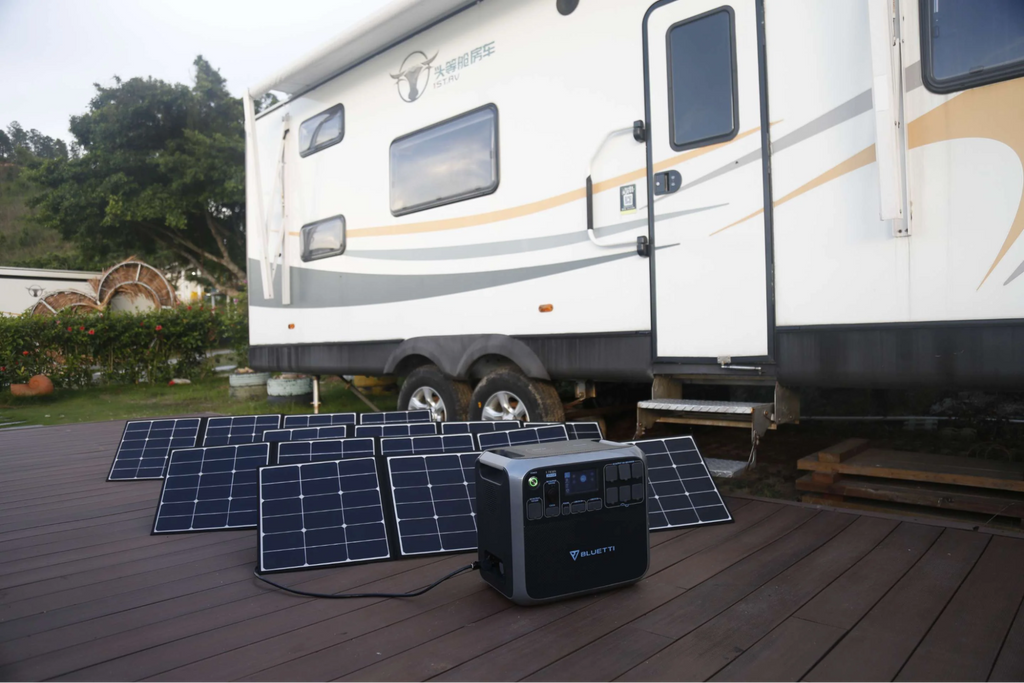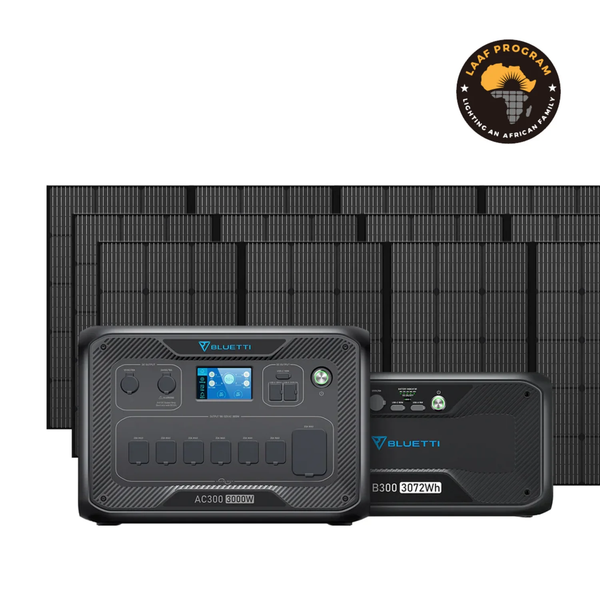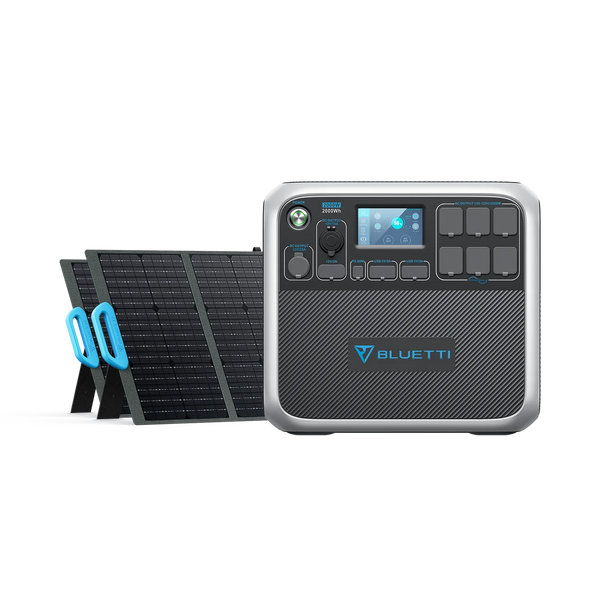Camping creates a beautiful trip through the heart of nature, with everything you could need from home in arm's reach. But to bring life back into your devices and gadgets, you do indeed need to hitch your truck to a stalwart power beacon. Based on the features and type of a particular vehicle, it would most probably need a 30-amp service and a 50-amp option. What are the differences between the two and which one would influence the stay in the recreational vehicle? We will cover that and much more. You'll learn the basic electrical terms, the pros and cons of having a 30-amp RV as well as that of a 50-amp RV, tell you the common RV appliances and their average power usage, and more.
Understanding Electrical Terminology
Before we talk about the difference between 30 and 50-amp service, there are some basic energy terms to understand:
- Amperes (Current)—This is the flow of power or electrons that passes through a wire in one second, measured in amps (A).
- Wattage (watts): Amount of electric energy or work done by electricity. Amps multiplied by volts. Measured in watts (W).
- Voltage (volts): Pressure pushing electricity through a wire. Measured in volts (V).
- Resistance (Ohms): Blockage or friction standing in the way of electricity flowing through a wire at a normal speed. Measured in ohms (Ω).
- Hot Wire: The wire running with electricity from source to an appliance or outlet. Normally black or red.
- Neutral wire: The wire that takes back the electricity to the source of power from the appliance or outlet. It is usually white.
- Ground wire: The protective wire that provides protection against electric shock by creating a short way of low resistance to the earth. Normal color is green or bare.
What are 30-Amp and 50-Amp RV?
The type of service your truck offers is revealed by the plug on your power cord. Think of a 30-amp plug, three-prongs: one for the ground wire, second for the neutral wire, and another larger for the 120-volt hot wire. So, visualize a 50-amp plug with four prongs: one round for the ground cord, the next flat for the neutral cable, and the final little flat ones for the two 120-volt hot wires. There might be a possibility that the outlet on the campground has both a 30-amperage and a 50-amperage output or just one. In cases where your plug doesn't fit into the outlet, an adapter will save you.
Key Difference with 30-Amp and 50-Amp RV
If you have been puzzled about getting one, look at these differences:
The Plugs
The connector on your truck power cord is a telltale sign of the energy it can harness. Picture a trident of prongs, a 30-amp plug—round for grounding, flat for neutrality, and a bigger flat one for the 120-volt hot wire. Imagine the 50-amp socket with a quartet of prongs: one round for grounding, another flat for neutrality, and two small flat options for the two 120-volt hot wires. A 30-amp connector can be made to fit a 50-amperage outlet, or vice versa, using an adapter. But then again, remember that electricity is a source to use judiciously, not to waste.
The Maximum Wattage
What will eventually control the appetite for power of your RV is the type of service it has. A 30-amp service, like a hard worker, is capable of delivering up to 3,600 watts of power, fitting for most of the small to medium RVs with their modest appliances. Meanwhile, a 50-amp service is going to be of real powerhouse size, capable of producing up to an immense 12,000 watts of power, perfect for larger RVs and RVs studded with many or high-powered appliances. With amps and volts, it's quite a simple mathematical dance between the two to establish your RV's wattage ratings. For example, a 30-amp, 120-volt RV does the multiplication as 30 by 120, giving you 3,600 watts.
The Number of Outlets
The number of outlets in your RV shows what kind of power it has. A 30-amp RV, like a snug cottage, has a smaller number of outlets and less power to distribute. On the other hand, a 50 amp RV will be similar to a big mansion in that it will, more often than not, have way more outlets due to its higher capability for splitting the electricity load. Meaning, more luxury of plugging in more devices and appliances at once and never worrying about overloading the circuit.
The Breaker Panel
The breaker panel in your RV helps you keep an eye on the electricity in your RV. A 30-amp RV contains one row of breakers, one circuit of all the power. A 50-amp RV is a split breaker panel in that two circuits run off the same power. Each circuit has its own row of breakers and can handle up to 50 amps. This lets you distribute the load between the two circuits, and use big appliances on different sides of the panel.

Average Amp Draw of Key RV Appliances
So as to be able to consume RV power wisely, you should be familiar with the current used by each appliance. Big appliances such as the air conditioner will use about 15 amps, with the electric water heater and the microwave at about 10 amps each. Normally, the fridge takes something of 5 amps or so. Adding to this are the other appliances; like TV, heater, coffee maker, fireplace, hair dryer, and converter, also adding up to the total current. Appliances that heat require more power. To avoid overloading your circuits, it’s smart to not run all appliances at the same time.
30-Amp versus 50-Amp Generator Use
The RV requires a generator in order to get power when not plugged in. However, you need to take note of the amperage rating your generator has. This is the quantity of current the generator can provide to you. Depending on its size and features, your truck may be a 30-amperage service or a 50-amp one. For your generator, the amp rating will tell you the kind and the number of appliances that you can run on it. For example, a 50-amperage truck plus a 5,500-watt generator may only give a maximum of 45.83-amps (5500watts/120 volts = 45.83-amperage). This simply means that you cannot use all your appliances at once. This comes in handy knowledge when you are out camping off the grid or using your generator as a backup.
Following are some of the great generators for RVs considered based on amperage, wattage, capacity, and solar features:
BLUETTI AC300+B300+3*PV350

Consider it a power bank with 3072Wh large capacity, and it grows to an amazing 12,288Wh with more batteries. It bears a 3000W pure sine wave inverter that serves for up to 6000W. You'll love that it charges 7 different ways, from solar to AC to car. Also in the kit are 3 PV350 solar panels, foldable, durable, and compatible with BLUETTI products. High efficiency, easy setup, and simple-to-use panels. Thus, this generator is more than a power bank; it’s a power beast.
BLUETTI EB3A+PV120

If all you are after is a kind of generator that can do it all, then you should consider EB3A+PV120. Here is an amazing option in the industry that contains 268Wh of energy and produces up to 600W of pure sine wave power. It can be recharged in 6 different ways, from solar panels to AC outlets. Features 9 different outputs to devices, and with a smart app to control, monitor, and more. Included in the kit is also a PV120 solar panel that is easy to fold and carry, with a simple set-up system. This unit is quite durable, with an ETFE coating to protect it from breakage and is mostly compatible with solar generators.
BLUETTI AC200P + 2*PV200

Here comes the modern wonder of the day, the AC200P+2PV200. It is a little boomer weighing in at 2,000Wh with a 2,000W pure sine wave inverter capacity, and it has seven ways of charging - that even includes solar, darling. Its 17 outputs, caters to various devices, and has a high-speed dual charging. To finish off the kit, there are two PV200 solar panels that are foldable, portable, but very sturdy. This ensures top efficiency backed with a 12-month warranty and is compatible with most solar generators, hence making this kit very cost-effective and it is gas-free, in addition to being super quiet—no noise.
Is 30 Amp or 50 Amp Better for an RV?
Your needs in terms of power will now determine whether you need a 30-Amperage or a 50-Amps truck. A 50-amp RV serves you best in the case where you fancy using very many appliances at the same time. But if you are indifferent to switching appliance use, a 30-amp RV is enough and more economical. It’s about finding the right balance between your comfort and your vehicle’s power limit.
Can I Run My 50 Amp RV on 30 Amp?
A fifty-amp recreational truck can use an adapter to run on a thirty-amp outlet. But the power it can avail of is only 30 amps. In this way, if it uses excessive power, it may trip the breaker. Safety is the most important aspect as you operate two units at one time. Keep power usage in check.
Final Thoughts
So, in conclusion, we could argue that if one doesn't need to use a lot of electricity and hence power from it, then a 30 Amp RV will work pretty well for them. A 30 Amp RV will have 3,600 watts in it which is pretty. However, should you be running many appliances at the same time, then a 50-amp RV running a whopping 12,000 watts is much better. Remember, you can run a 50-Amp RV on a 30-Amp outlet if you watch your power usage. In the end, knowing your RV’s power limit and using your appliances wisely makes your RVing safe and cozy.




